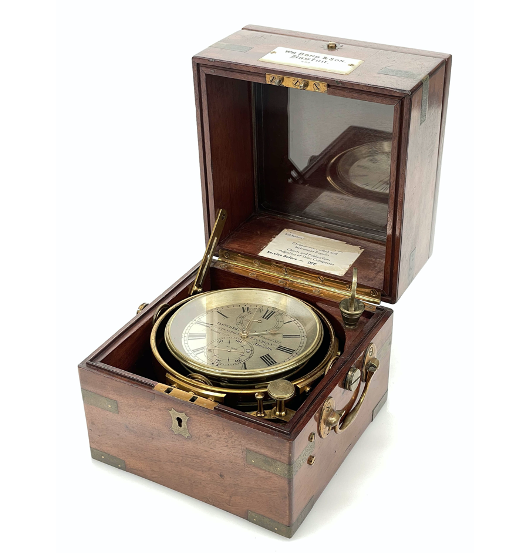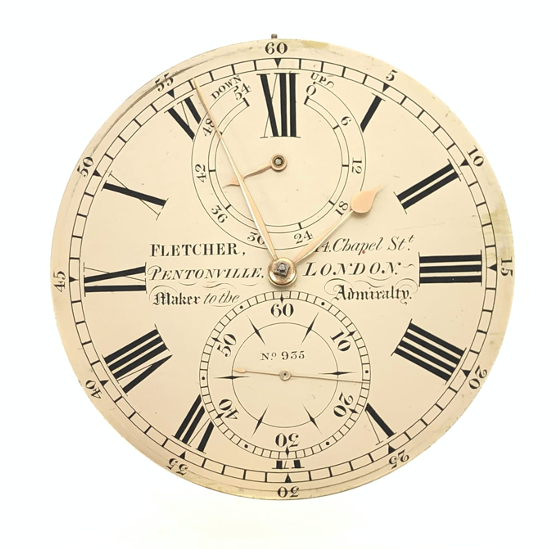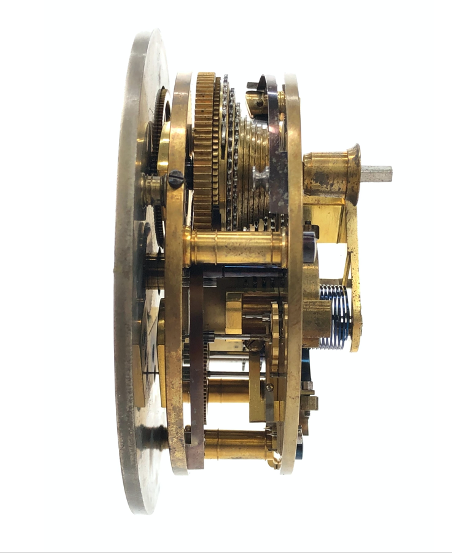John Fletcher the Chronometer Maker to the Admiralty, was born in Little Lever, Bolton in 1801, son to Robert and Elizabeth Fletcher. He became a pinion maker. He moved to London as a Chronometer escapement maker by 1832 and then by 1846 was living in Berkeley Square in London. he retired in 1880 and died in 1882.
As well as Chronometers he also made fine quality clocks for houses, during his time he bought out a number of makers; Dwerrihouse, Eiffe and Cummins (below)
John Fletcher working 1832 – 1882, ex Lancashire pinion maker, working in London initially at 54 Whiskin Street, Clerkenwell. From 1832 – 1835 he was listed as a chronometer escapement maker, at 14 Chapel St, off Liverpool Road, then Dwerrihouse, 27 Davies Street Berkeley Square 1845 -1849; then Eiffe 48 Lombard Street 1849 – 1856. John Fletcher learnt springing from William Cribb and settled down as a chronometer maker springing and adjusting his own work at Cummins 148 Leadenhall Street 1858 – 1867, then 99 Leadenhall Street, and finally Billiter Street, John Fletcher in his later years partnered with his sons Frederick Fletcher, and John Bedford when his son John Bedford died in 1880 this seemed to spark John Fletcher’s retirement and he retired 1880, and died aged 80 in 1882.
John Fletcher entered into the Chronometer trials at the Royal observatory and in 1842 he was third with his clock 950 and also in 1878 with his clock 3482. The so-called Greenwich Trials, were very strict precision tests conceived by the Admiralty and aimed at making a selection of the most precise instruments for measuring time. This would guarantee that Britain’s navy could continue ruling the waves.
John Fletcher also took on board the soon to be famous Chronometer maker Thomas Mercer and an employee In 1854, Mercer went to London and found his first job at John Fletcher’s. Four years later, he split amicably from Fletcher to found his own company, which bore his name.
John Fletcher was a fine chronometer maker and also traded as an optician. He was a member of the Council of the British Horological Institute
History may show John Fletcher to be one of Bolton’s most successful clockmakers of all time.
A fine quality rosewood bracket clock, by John Fletcher late Dwerrihouse, 27 Davies Street, Berkeley Square London.The high quality “Gentleman’s Library” style case veneered in beautifully figured rosewood, constructed on a solid oak carcass. The sides with sil lined cast brass frets and rear with glazed viewing window.The square silvered brass dial with fine engraving to the corners, signed Fletcher late Dwerrihouse, 27 Davies Street to the dial centre, with strike silent lever above the XIIThe high quality chain driven twin fuse movement of eight day duration, united by five knopped pillars, with the original anchor escapement and striking the hours on a single curled blued steel gong, with strike silent facility and pull repeat. Signed to the back plate Fletcher late Dwerrihouse 27 Davies Street, Berkeley Square. Heavy brass bob pendulum, with London style rating adjustment and knurled thumbscrew pendulum restraint
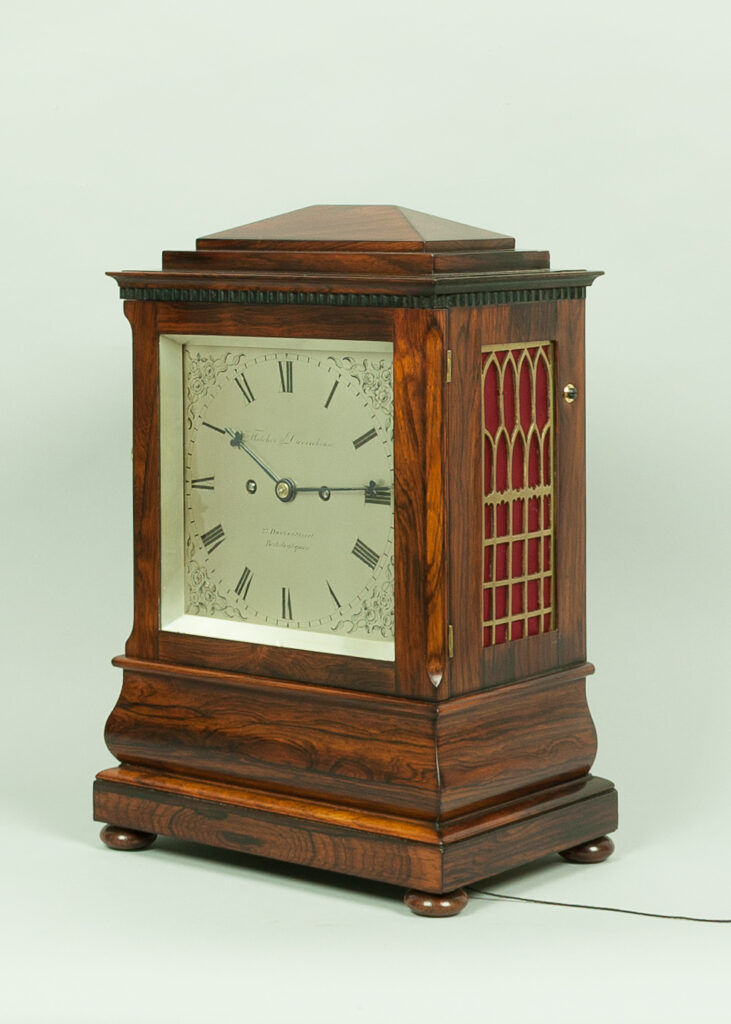
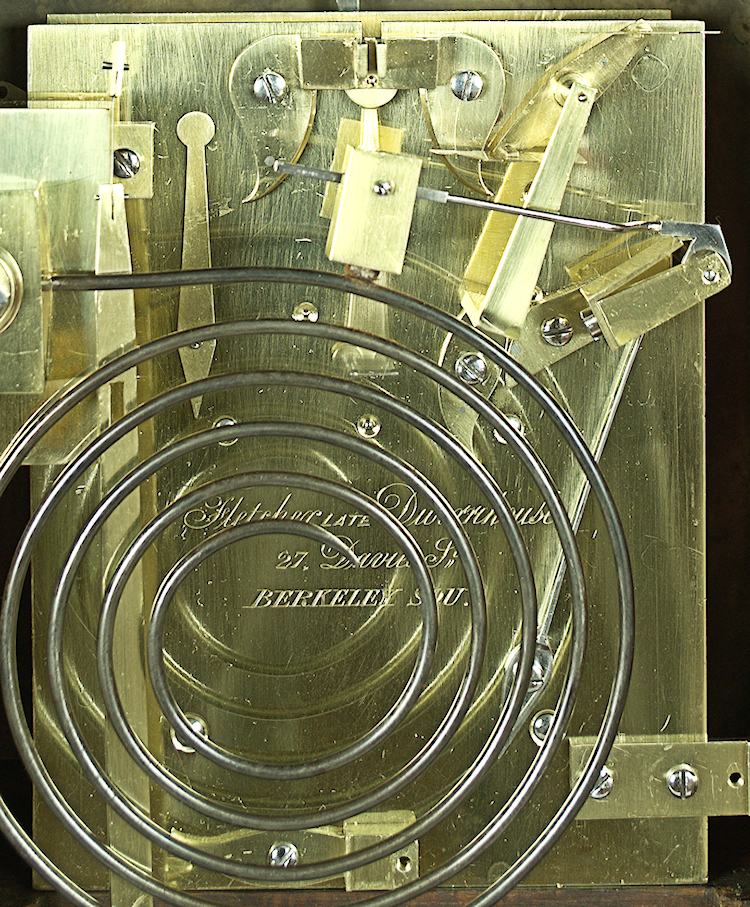
John Fletcher Marine Chronometer. Spring detent marine chronometer with Airy’s compensation arm and 56-hour winding indicator, mounted in gimbaled brass tub within three-tier mahogany box, silvered dial of approximately 4 inch diameter signed “John Fletcher 14 Chapel St, Plentonville, London maker to the admiralty no. 935. British military pheon (broad arrow) within seconds-register, Key Wind Key Set,(KWKS) fully capped spring detent escapement, jewelled click pinion, 11-12J, bi-metallic balance with Airy’s compensation and helical hairspring, movement marked with pheon. Serial number 935. Sold by Wm. Bond & Son Boston 499 as shown on mother of pearl plaque on front of box. Comes housed in original mahogany box with leather straps.
